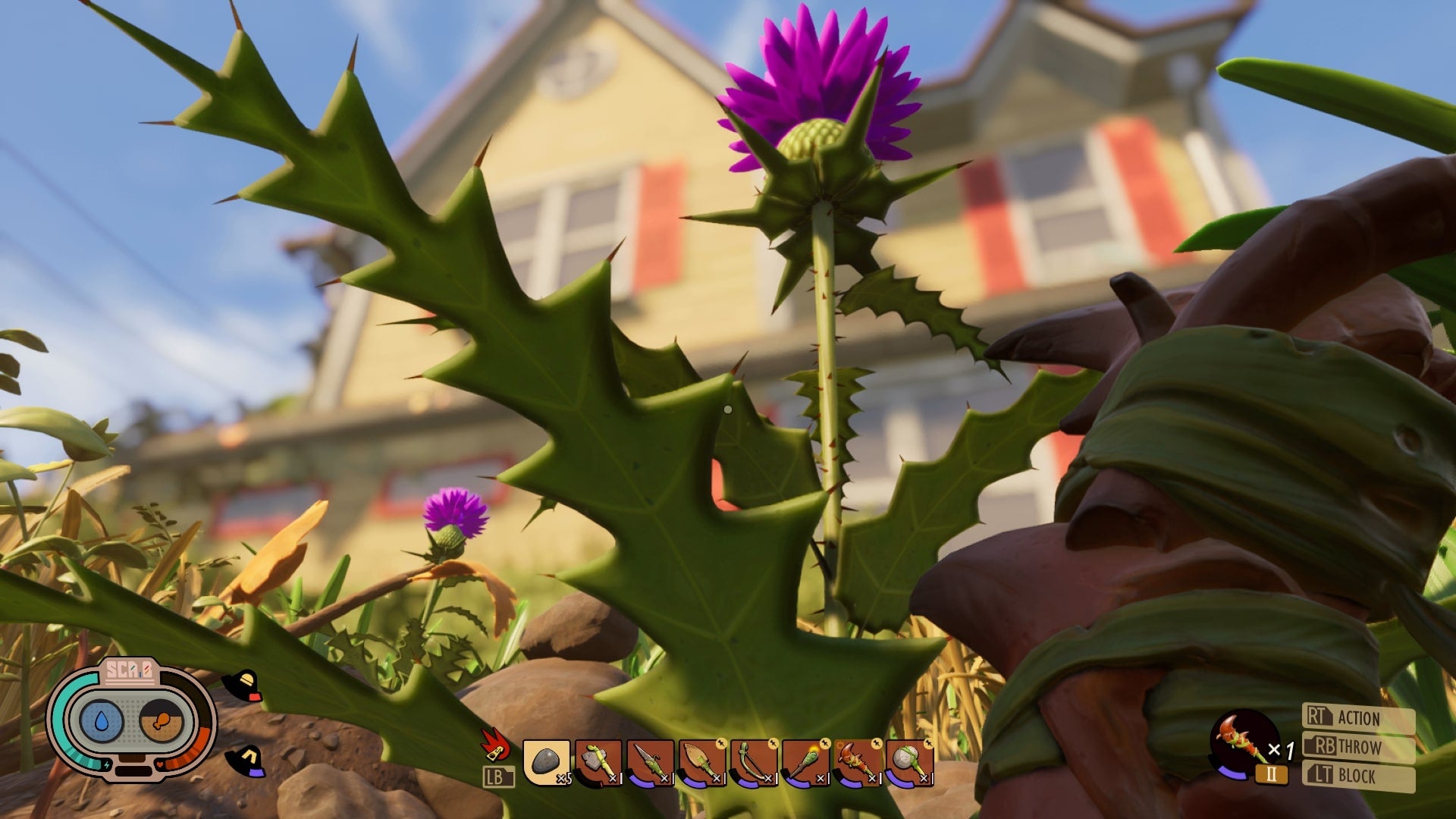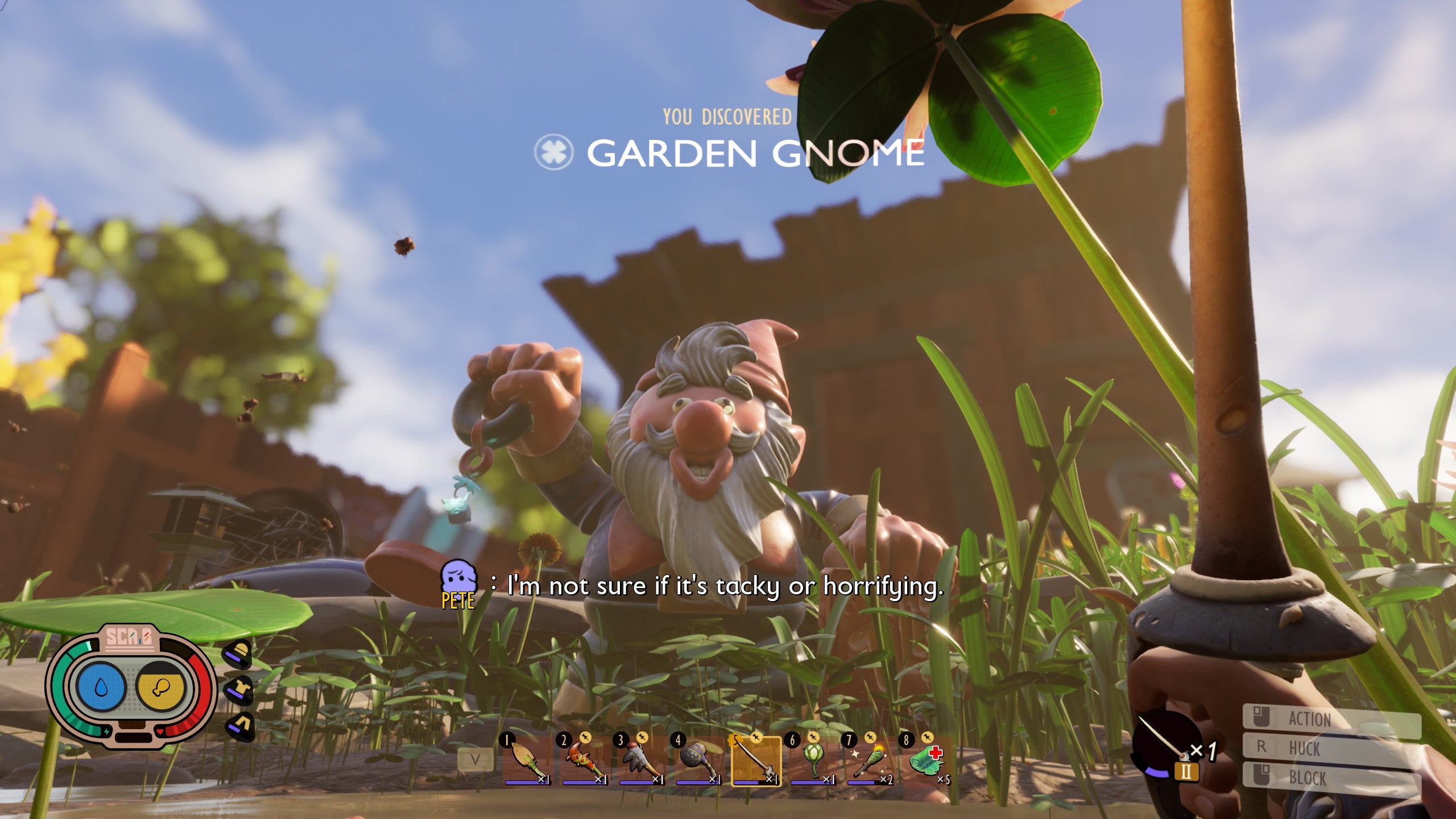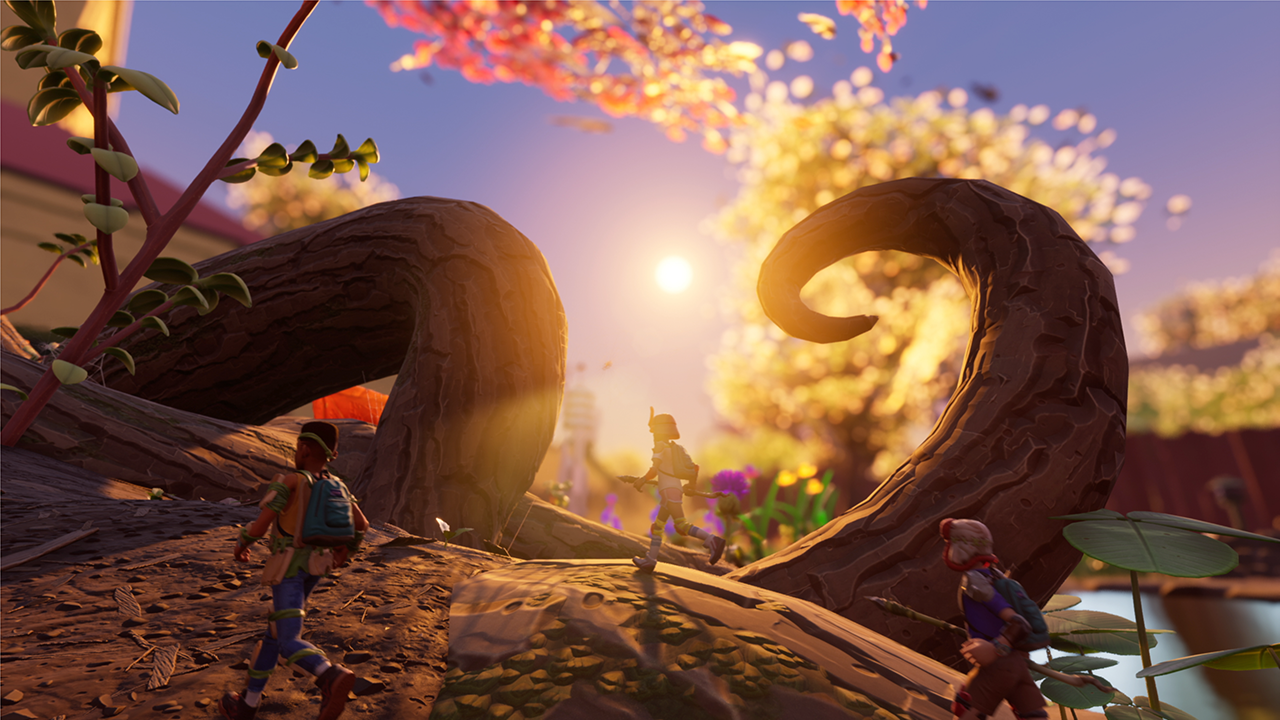Products You May Like
In an act of true betrayal, I have turned my back on Playstation, toward the seductive allure of the Xbox Series S. I’ve long believed that the weapon for generations moving forward are no longer individual exclusives, but a veritable feast of games available to download and play instantly – and right now, Xbox Game Pass is a mighty tool in Microsoft’s belt. There are classic collections like the Gears and Halo series, alongside a deep variety of library titles, but there was a game I’d been itching to play ever since it was announced, and that game was Obsidian’s Grounded.
I’m a huge survival games fan – I grew up on Minecraft (who didn’t, really?) and Endnight Games’ The Forest is undoubtedly one of my favourites of the last generation. What first appears as a simple survival game soon unravels into this complex web of intelligent AI, Lovecraftian storytelling and environmental mystery. And for a long time, I hadn’t found another game that had me glued to my sofa, playing into the early hours. Until now.
Much like The Forest, Grounded’s initial opening leads you to believe you understand the environment you’re in, before pulling the rug out from under to reveal a sprawling cornucopia of mysteries, questions and challenges. The garden is a gigantic landscape, and it takes hours to even begin reaching its outer edges, demonstrating the processing power that shows next-gen can meet the lofty ambitions of survival games better than ever. Even three months in, I’m still discovering new dungeons to plunder and areas to excavate, which surprises me considering how many hours I’ve already sunk into the game.
An issue I’ve found with a lot of survival games like Rust, DayZ, Ark: Survival Evolved is that they have a limited time frame of enjoyment before you hit the peak of your potential within the game, and there’s nowhere left to go but down. Their mission statement is simple: ‘Build, Survive, Dominate.’ That is a successful and lucrative model for some as seen with Rust’s immense community, but for many others, it leads to a stagnation.
TBy comprison, Grounded feels more innovative. Its mantra to the player feeds back into its own core narrative: ‘Discover, Investigate, Analyze.’ Your investigation in the disappearance of the scientist Dr. Tully leads you and your friends to become scientists yourselves – chopping down strange pieces of wood, harvesting flowers, taking them back to your Research Station to analyse them; you become innately immersed into Grounded’s world out of this active desire to understand, rather than conquer.
It perfects a formula laid out by Subnautica and Subnautica: Below Zero – albeit in a more suburban, macro setting. Some of your greatest and longest expeditions won’t even be to make armour or weapons, but instead to find that last crow feather on the edge of the map so you can finally make those cool-looking beds. It’s player-directed, emergent gameplay at its finest.

Initially, Grounded’s combat is hard. Actually, it’s really hard. You can’t just slash-slash-slash, overwhelming your foe until they drop. Every element of Obsidian’s game design thoughtfully feeds back into its core concept; that human/nature dynamic that’s become inverted, with the bugs on top and you firmly on the bottom. You could make the most powerful weapon in the game, but even a ladybug is still going to kick your ass if you don’t know how to tango with it. You can’t just run in axes blazing – believe me, I’ve tried.
Instead, Obsidian pushes to you to learn every enemy’s battle tactics and movement pattern, from the smallest mites to the behemoths like Wolf Spiders and Black Widows. It’s all about encouraging a deeper appreciation of the complexities of each bug’s AI, figuring out how they interact together, and understanding how Grounded’s combat system and mechanics can lead to some immensely rewarding moments. I remember the rush of adrenaline at soloing my first spider after training my blocks and my parries on smaller fry. Even just sitting back and watching a horde of ants fight a Wolf Spider can be fascinating. It’s a field experiement, and you scribble down mental notes, extrapolating who is going to win the fight, and why.

While it’s far from a perfect game, Obsidian’s continual support for the Grounded community has been impressive. Perhaps the biggest sign that the developer is listening to fan feedback comes in the form of its consideration of Arachnophobes: the studio implemented a sliding scale of Spider-ness, allowing to reduce them to blocky sprites rather than blood-curdling, octo-eyed monstrosities.
However, it’s Obsidian’s most recent Winter update that proved the studio is taking on the concerns of its players and implementing their suggestions. Alongside the typical holiday trimmings like funky Christmas lights and other Winter-y apparel, several minor quality-of-life adjustments, such as the ability to ascend zip wires, completely transformed how players can traverse this labyrinth of grass and dirt.
We often gravitate toward survival games because they’re ambitious. Whether it’s the scope of their environments, or the attractive allure of epic base-building, you can feel something tugging you in, tempting you to try them out. But their combination of so many mechanics can often lead to numerous bugs, glitches, and errors that can take a long time to fix.
That’s why Grounded feels like a new benchmark for survival games. Its multi-layered design feels carefully considered, and feeds back into its narrative core – creating this virtual ecosystem where everything works together not just to inform, but to encourage players to thrive.
It takes that unbridled creativity that Mojang captured with Minecraft and smashes it together with the environmental mystery and complex AI mechanics of The Forest to deliver something worthy of its new-gen status. You feel encouraged to try and interact with everything you discover, challenged through the subversion of typical survival mechanics and aims. Grounded creates an adventure that makes you want to stay up far too late to see how your next mission plays out. And there’s a very special kind of magic in games that manage to achieve that.
